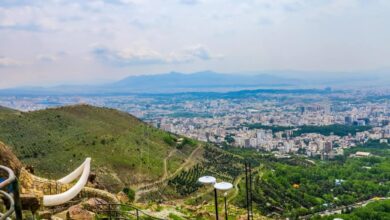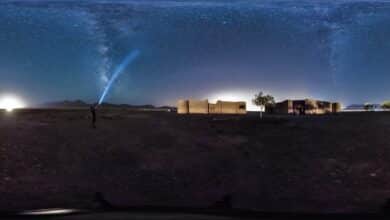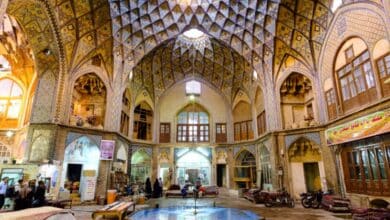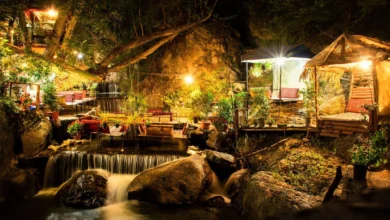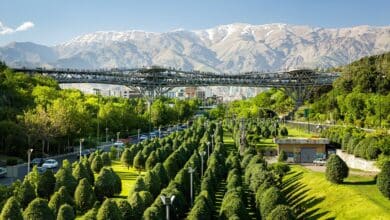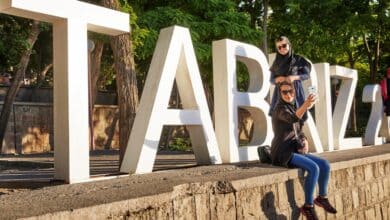The National Museum of Iran: A Journey Through Persian History
Witness the Legacy that Shaped a Nation
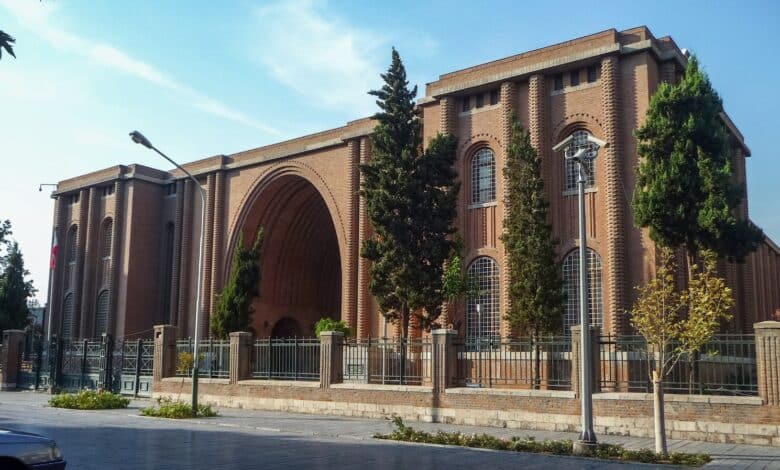
The National Museum of Iran is the largest and oldest museum in the country and holds special significance as the mother museum of Iran. It was initially known as the National Museum and later as the Museum of Ma’arif, but it is currently recognized as the National Museum of Iran. The building of this museum was registered in Iran National Heritage List in 1375 AH (circa 1996 AD). Let’s explore more about this museum.
Contents
Architecture of the National Museum of Iran
The museum was built by order of Reza Shah Pahlavi and designed by French architects named André Godard and Maxime Siroux. It was inaugurated in 1316 SH (circa 1937 AD). The museum currently has three floors and covers an area of 11,000 square meters. Considering the artifacts inside the museum, the designers decided to draw inspiration from ancient Iranian works for its construction.
Architecture of the main entrance of the National Museum of Iran
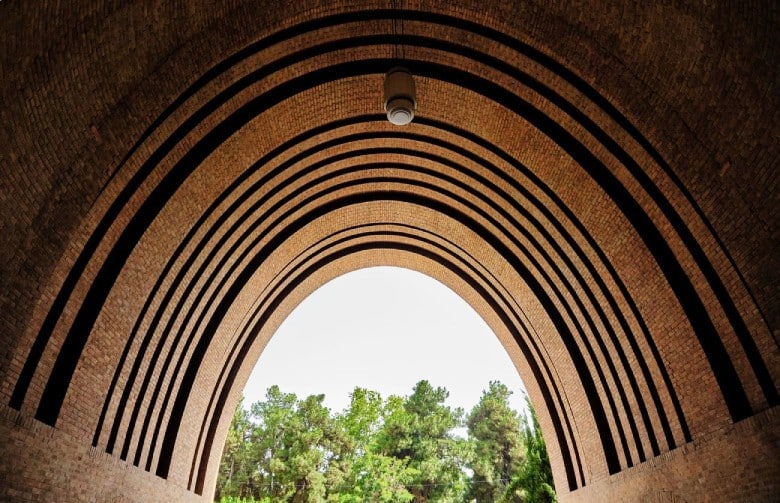
Based on the aforementioned information, the facade and the main entrance of the National Museum are inspired by the Taq Kasra (Arch of Ctesiphon) from the Sasanian period. The arch has a crescent-shaped vault, and minimal decorations were used in its design. The unique arrangement of bricks was employed to enhance its beauty. Interestingly, the bricks used are of a dark red color, which is characteristic of Sasanian architecture. At the top of that, you can see a marble inscription with a poem written by an ancient Iranian poet named Malik al-Shu’ara Bahar.
Architecture of the Interior the National Museum of Iran
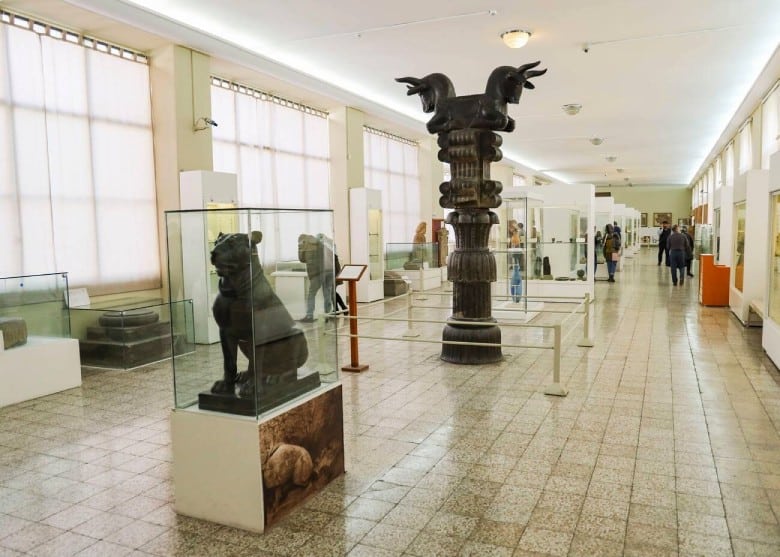
The interior of the museum consists of three sections: the entrance hall, the object display area, and the administrative space. They are housed in a rectangular building with beautiful breakages on the side facades. The main hall of the museum measures 61 meters in length and 34 meters in width. There are also two square-shaped skylights in this hall, which allow beautiful natural light to illuminate the interior. Narrow and tall windows of equal size can be seen in the eastern and western walls, allowing more light to enter the hall.
Introduction to Different Sections of the National Museum of Iran
The museum consists of two sections: Ancient Iran Museum and Museum of the Islamic period.
Ancient Iran Museum
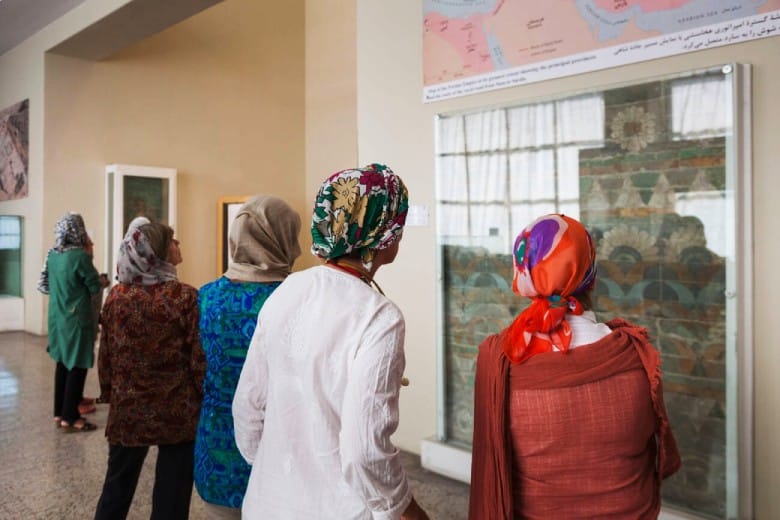
The Ancient Iran section is further divided into two parts: Prehistoric Iran Museum and the Historical Period Museum.
Prehistoric Era section
In the “Prehistoric Iran” section of the museum, you can find historical artifacts from the Paleolithic era to pre-writing periods. These artifacts represent the early human civilizations in Iran before the invention of writing.
Historical Era section
The “Historical Era” section, located on the first floor of the museum, displays artifacts from the beginning of writing until the end of the Sasanian period. One of the most interesting pieces in this section is the world’s oldest animation, depicted on a pottery piece from the Burnt City in Iran.
Museum of the Islamic period

The Islamic Era section is situated on the second floor of the museum and exhibits artifacts from the post-Islamic period. This section was added to the National Museum in 1996 (1375 in the Iranian calendar).
Quran Hall
In this hall, you can find Qurans dating back to the early Islamic period. These Qurans are written in various scripts, including Kufic, Naskh, Reyhan, Mohaqiq, Thuluth, and Ghubar. A page from a Quran belonging to Nader Shah is displayed in the center of the Quran Hall. It’s worth noting that Nader Shah carried this Quran with him to protect his soldiers during battles. Unfortunately, some pages of this Quran were burned during the fires of Nader Shah’s wars.
In addition to housing ancient objects, the museum has sections such as a library, gallery, handicrafts shop, and a café-restaurant. It’s worth mentioning that the museum’s library contains handwritten and lithographic books, including lithographic copies of the Quran from the Qajar era.
Artifacts in the National Museum of Iran
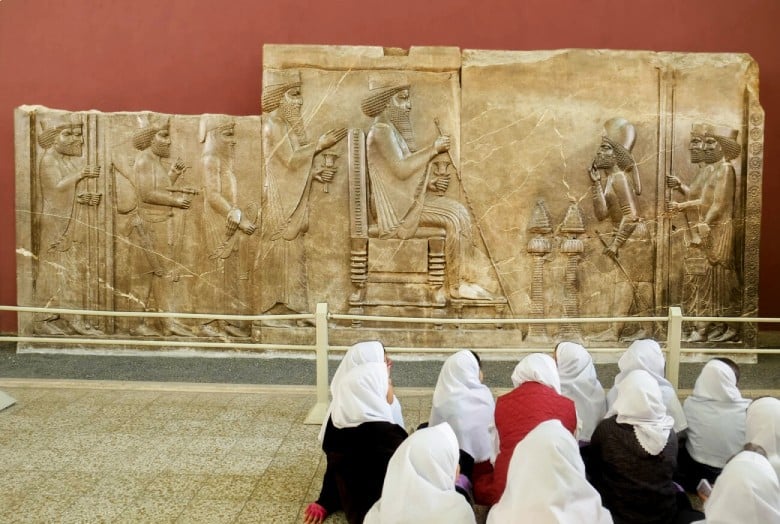
The museum houses a diverse collection of ancient and valuable artifacts. Here is a brief introduction to the most important pieces.
1. The oldest handmade artifacts from the Middle Paleolithic period, such as fire-struck stones and remains of animal figurines discovered in caves in the Zagros region, dating back over a million years.
2. Personal decorations from the New Paleolithic era, such as bone tools, shell pendants, animal teeth.
3. Composite tools and stone blades belonging to the Epipaleolithic.
4. Pottery vessels with simplified mountain goat motifs, stone vessels with various patterns depicting mythical human-animal battles, half-body clay figurines of naked man with hands clasped on the chest, and geometric, animal, and plant motifs from the Copper and Stone Ages.
5. Pottery with tubular spouts, weapons, human and animal figurines, and metal and iron decorative objects from the Bronze Age.
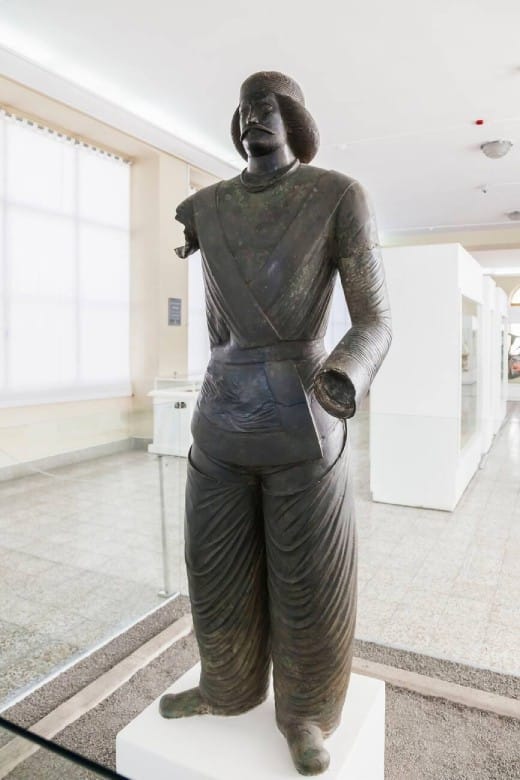
6. Artifacts including a bovine figurine with an inscription, glass tubes, inscribed clay tablets, cylindrical beads and Chinese-style objects discovered from the Chogha Zanbil temple, dating back to the Middle Elamite period.
7. Sculptures of Darius the Great, and a salt man from the Zanjan mine, belonging to historical periods, as well as glazed ceramics like the Ziggy glazed narrow-necked jar from the Medes period.
8. Qurans written on deer skin from the early Islamic period, ceramics, ancient hand-woven bookbindings and illuminations from the Timurid era, blue and white Chinese ceramics, silk textiles, etc., from the Islamic period.
There are many other valuable artifacts on display at this museum.
Access Routes to the National Museum

The National Museum is located on 30 Tir Street in Tehran. You can visit the museum by private car or public transportation, such as buses and the metro. The nearest metro stations to the museum are Imam Khomeini and Hasan Abad stations.
Book Iran Flights
Buy Iran flight tickets at the lowest price
Explore Iran’s culture and history with affordable and reliable flight tickets.
Wrap up
By visiting the National Museum of Iran, you can familiarize yourself with Iran’s millennia-old civilization, from prehistoric times to the historical and Islamic periods. It is worth mentioning that the museum is open to the public every day from Saturday to Thursday, from 9 am to 5 pm, and on Fridays from 9 am to 8 pm. There are also several high-quality hotels around the museum where you can stay if needed. We look forward to your visit to Iran.
FAQs
When was the National Museum of Iran inaugurated?
Construction of this museum began in 1929 by the order of Reza Shah Pahlavi and was designed by French architects named André Godard and Maxime Siroux. It was officially opened in 1937.
What are the different sections of the National Museum?
The museum consists of two sections: Ancient Iran Museum and Museum of the Islamic period. The Ancient Iran section is further divided into two parts: Prehistoric Iran Museum and the Historical Period Museum.
How can I access the museum?
You can visit the museum by private car or public transportation, such as buses and the metro. The museum is located on 30 Tir Street in Tehran, and the nearest metro stations are Imam Khomeini and Hasan Abad stations.
What are the visiting hours for the National Museum?
The museum is open every day from Saturday to Thursday, from 9 am to 5 pm, and on Fridays from 9 am to 8 pm.
